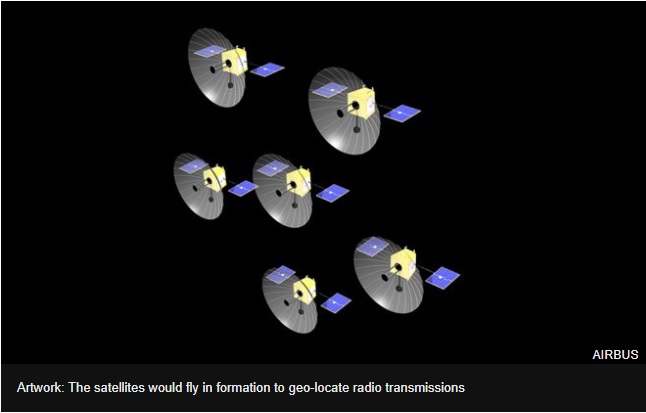
The UK government is pushing ahead with its plans for a cluster of military radar satellites, placing a design study with Airbus.
Project Oberon, as it's known, has been in discussion for a while.
It envisages a network of small spacecraft capable of seeing the Earth's surface in all weathers and at night, and at very high resolution.
The satellites would also have sensors to locate the use of radio transmissions.
This is information that can be used in tandem with the radar pictures to better identify targets on the ground and interpret their behaviour.
Currently, British forces do not have the benefit of a sovereign Earth observation system. They must rely on commercial imagery or data supplied by allies.
Radar satellites have traditionally been big, expensive beasts, but technology developments are shrinking the size and cost of these platforms.
The Airbus study anticipates a demonstrator spacecraft being launched in 2022 with an operational capability in orbit possibly as early as 2025.
"Project Oberon builds on Airbus' expertise in space radar technology developed over 40 years," said Colin Paynter, the managing director of Airbus Defence and Space UK.
"I look forward to seeing this study leading to a new world-class surveillance capability for the UK Ministry of Defence (MoD), helping to protect our armed forces across the world."
News of the study was announced by Gary Aitkenhead, the chief executive of the UK's Defence Science and Technology Laboratory (Dstl), an executive agency of the MoD.
He was speaking at the Defence and Security Equipment International (DSEi) trade show at London's ExCel conference centre.
"This addition to our capability is a valuable part of the future of Defence Space. Partnership between Dstl and Airbus on this project secures UK jobs as well as continuing to exploit advances in the UK space sector."
The armed forces have been testing data gathered by the NovaSar satellite, which was launched a year ago.
This first all-British radar spacecraft was developed by Airbus and its subsidiary Surrey Satellite Technology Ltd.
At 430kg, it is small by historic comparison, but still large when set against the very latest platforms now being built by commercial operators, such as the Finnish Iceye company and the US start-up Capella. Their satellites weigh well under 100kg.
Airbus says it too can achieve similar compactness whilst also delivering very high performance.

